
11.01.2023
With an eye on the horizon of challenges, presences and improbable encounters in the art world, Elodie Fulton and Andrea Ocampo talk about the scope of the Ch.ACO effect.
Elodie Fulton is a French architect and cultural agent, lives in Santiago de Chile and directs Ch.ACO, the Chilean contemporary art fair, whose 13th edition has just ended amid containers, performances and DJs in the shadow of the Movistar Arena, probably the best venue for massive concerts located in the traditional Parque O’Higgins of the southern capital.
In the midst of the crossroads between music, visual arts, live arts and a heat above 34 degrees Celsius, we met with the helmswoman of this cultural milestone that returns to its physical format after two years of digitizing its exhibition. COVID-19 changed the use of the platforms, delivered lessons and surprises that would help to rethink several things about the event and its audience.
We begin the recording and Elodie says: “To coordinate an annual event like Ch.ACO has to be attractive for an international space, but it must also respond to a reality and happenings, both in the visual arts and in national politics. It has, therefore, to appeal to both (….) Ch.ACO, in that sense, is the local implementation of a format that effectively activates, stimulates and asks questions. I think this is interesting for everyone, because it activates an ecosystem, or aims to create an ecosystem. That is to say, that a very broad public understands what a gallery is, understands why museums exist… that there is a very civic space.”

Andrea Ocampo: I would like to expand on this point, what kind of questions does Ch.ACO ask itself or us?
Elodie Fulton: The first thing would be to promote the notion of a market that is clear for everyone. That is to say, that there is a market opportunity, visibility and activation of a system. And also, this urgency that has been there since its genesis: to try to transform Santiago de Chile into a visual arts festival. So, Ch.ACO not only concentrates on the event itself, but also exists as a possibility, through this information: that the people who are concentrated there can meet and live together for a week. But it also incites a public to follow afterwards, to get to know other places. Ch.ACO is a gathering of information, it is an opportunity for an artist to show their work, but also to talk. I have always found it interesting—in Latin America—that fairs are a space where artists gather. There is another international model, where the artist does not appear because it is the relationship between the gallery owner and the buyer. Here, the situation has a very seductive human factor and the public itself knows that it is going to meet the artists. These events, undoubtedly, reveal the atmosphere of the sector.
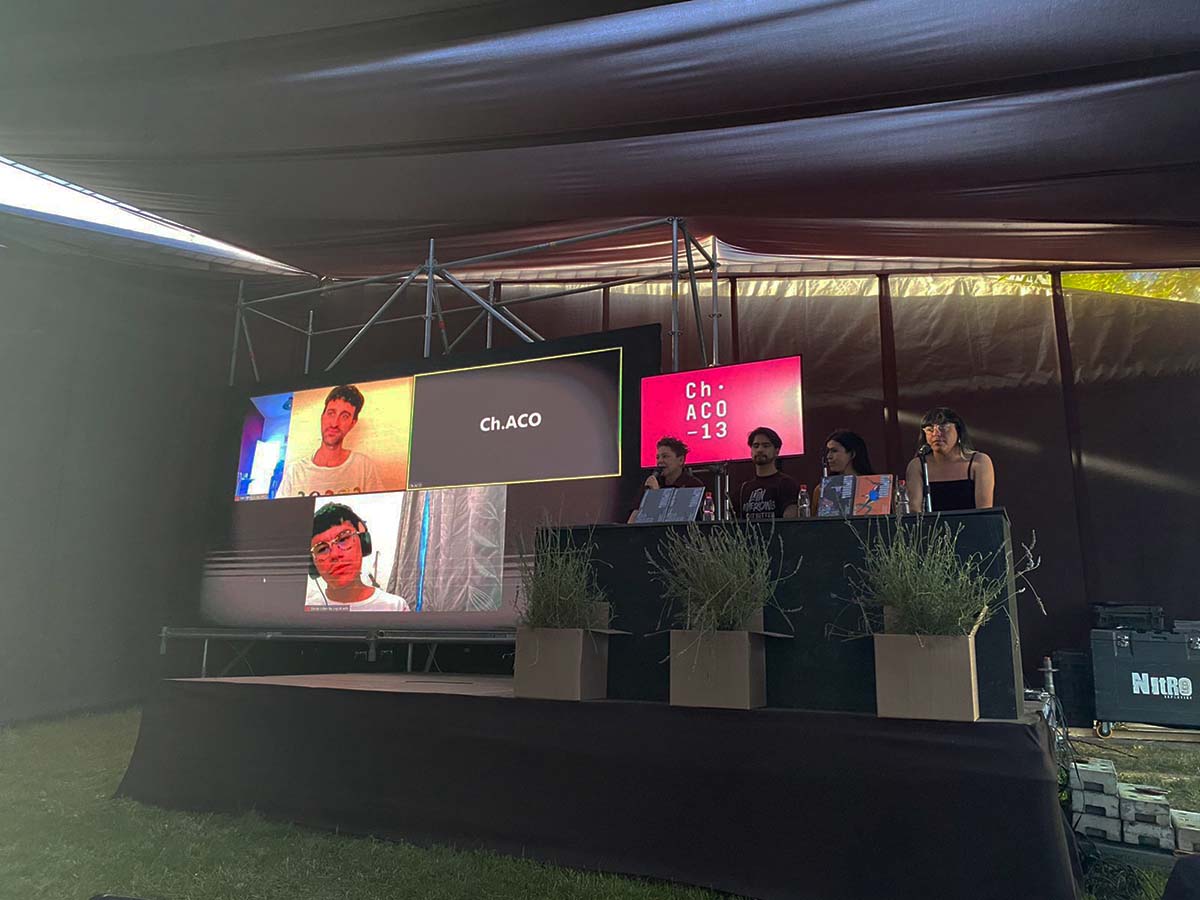
AO: This edition had as its motto: “improbable encounters”. What would those encouters be for Ch.ACO, or for art?
EF: Well, the improbable encounter is to set up in a place that is very successful for music, for shows, for a very massive world (Movistar Arena). The idea was to set up in a physical place, and we thought: what is the public that should really know about art or be attracted to it? Where is the possibility of visual arts today? And to realize that, in turn, all visual artists today are much more integrated in other disciplines; and therefore, we had to find a place where there was a much more fluid situation and also had to do with a generational reading (…) For COVID-19, we had the 11th and 12th edition in digital version, and that won over a new audience that, surely, was not used to visiting galleries or an event like this, but they have an affinity for other cultural disciplines. This improbable encounter has to do, then, with recognizing the complexity of that public and, above all, with trying to conquer it through the kindness of the word fair. One goes to a place where there is a quite simple possibility, which is not demanding, nor does it generate tension: it does not have a façade that complicates the public. So, it can also summon the family and the educational program. Ch.ACO has always sought these encounters, since its genesis: the first time it was done, galleries that eventually would never have relations with each other met, enclosed for a week. This coummunications is something that we have always thought is very interesting, because it continues to be a promoter of reality and, later, concrete facts, more tangible, such as the generation of contents and projects. Obviously, being an international fair, the idea is that there is always this approach, not only with national actors, but also regional ones: with the visits that came, starting with Terremoto.
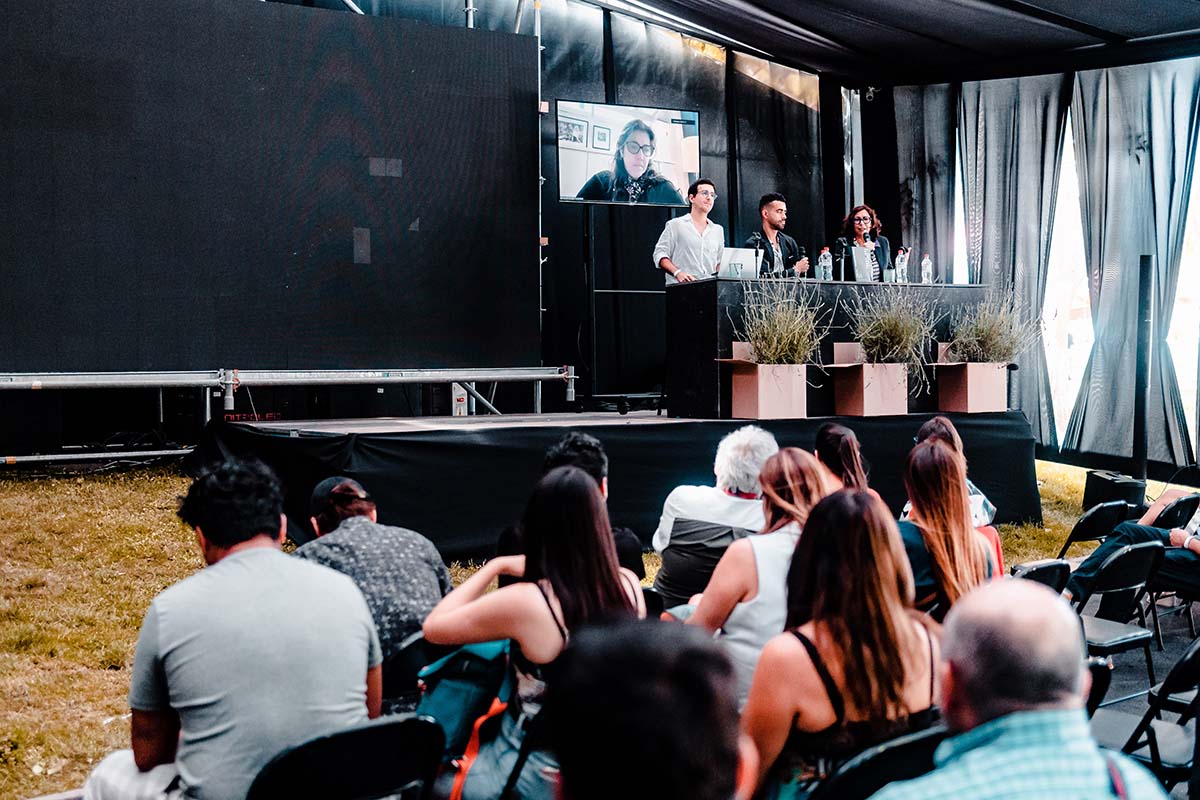
AO: I also understand that you were part of the creation of the Movistar Arena, how did you live that mutual agreement that Ch.ACO made with the venue? How did those creations of which you are a part dialogue?
EF: When the project (Movistar) was conceived 19 years ago, the goal was to think if it was even possible. The big question was: is the Chilean public avid for this? Was it going to be possible to gather ten, twelve thousand people in a concert hall? The question always falls on how one spends one’s salary. And… 18, 19 years later, this infrastructure does more than a hundred events a year, it is constantly full, and the tickets are much more expensive than what Ch.ACO proposes. So, this public is avid, and that is the construction we are doing. There is no interest on the part of Ch.ACO to move venues, but to continue to persist in the construction of this dialogue, with this type of public. And, above all, because at the urban level it is a much more central place than the common place in the world of visual arts. Undoubtedly, the itinerancy had its positive side, and then negative, because it’s a bit tiring… In the end, you realize that all the fairs in South America have moved from one venue to another. It’s hard to keep a permanent venue: in Mexico, they’ve changed; in Lima, they’ve changed; arteBA has just moved. The interesting thing is to convey that these are not whims, but a search to conquer new audiences. And it is a request made to us by our clients, who are the galleries, who are asking us for a number of requirements to be met.
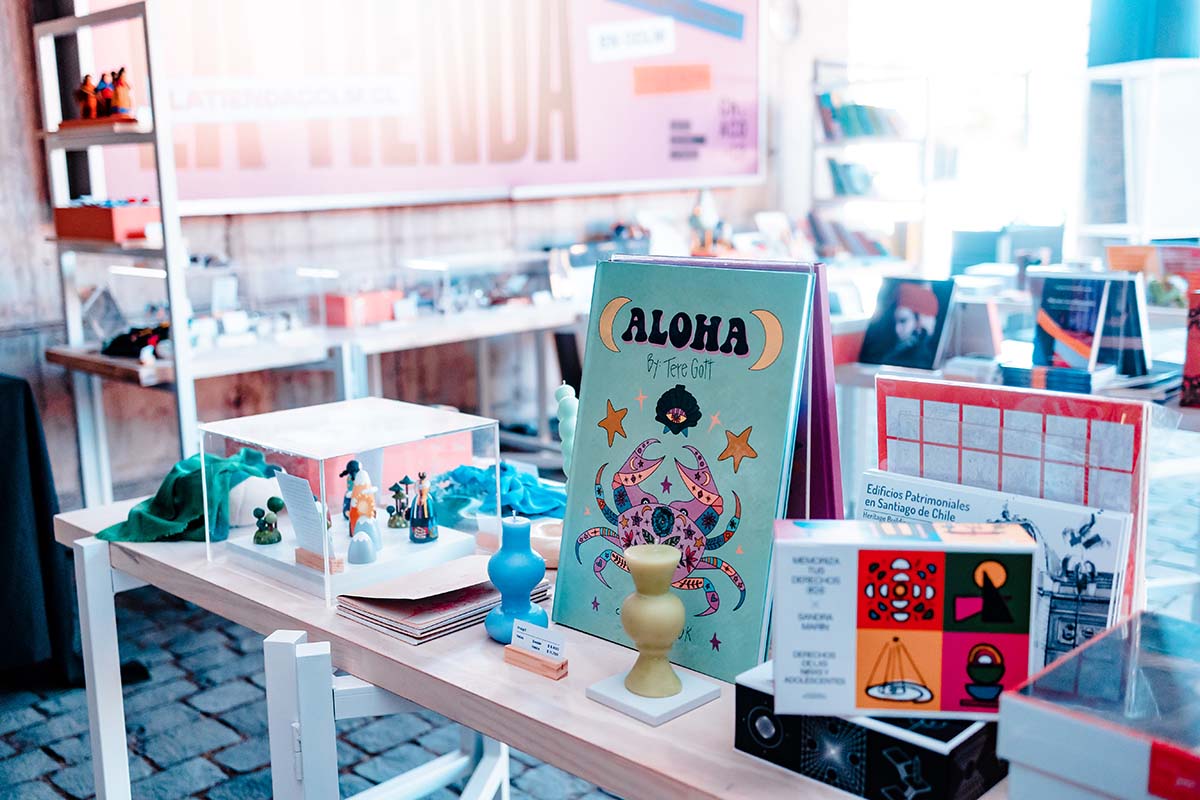
Art fairs are not a critical space
AO: To what extent does the work you have done aims to change mentalities, that is to say, that its effect goes beyond the buyer, the gallery owner, the collector? How do you see this Ch.ACO effect?
EF: The Ch.ACO effect is raised or vindicated and, in addition, it forces the existence of an ecosystem, based on the fact that it is an international fair. So, it has international codes: a museum director can come and meet the director of the Museum of Fine Arts, and give a talk there for a general public. This is a reading of Santiago around a certain industry, which has to show and where each one has its space. So, there is no hegemony. Here, there is a complexity of relationships that make each find its momentum. That is what is important. This year was a little more timid, because we really wanted to meet again and concentrate the fair. There were talks on collecting, but also on queer art, on what was happening with cultural administration in the region. Since it is annual, it is very interesting to be able to say how is such and such management working now. That’s where the politics of the event comes from. I think that anyone who reads the catalog realizes how the texts try to reflect current events; and therefore, I think it also has this side… a fair within this sector must be positivist: to show the best. A fair is not a critical space, it’s a space for critics to go and talk; undoubtedly, it always seems very useful to us, given that it’s an unexpected public… Such as this year’s acquisitions, which were from a very new public that—as I said—had all that influence of social networks and that made them want—quite reasonably, I think—to go and see the works in situ and not only through the networks.

AO: That seems very interesting to me, how did you feel that reception, where you not were an art fair, but—in addition—dared to acquire and/or deliver something?
EF: I believe that this is a horizontal relationship, with more transparency. The new drifts and the presence of workshops also (showed us) an eagerness for dialogue, no doubt. We made efforts so that there would be a regional presence, to create this reasonable space, whose scope (of Ch.Aco or its will) would reach the three or four bordering countries. We believe that there is a region very eager to dialogue. And we would never have been able to do this information gathering in such a constructive way without COVID-19. So, the existence of a space for Antofagasta, Concepción and Valparaíso was an idea that had always been dreamt of but, logistically, it always depended on an establishment, that is to say, on a public situation. So, we went through this, how to make the amount of information attractive. Here is an event that has a price, and that is the discourse we have worked on with all the galleries present. Both in terms of the quality of the offer and the price of the offer. So, there is a great challenge: that of expanding… the self-demand is for the fair to be attractive. And to be attractive it has to read and provoke, and not have any censorship regarding the ways of expression. There is a demand for validity, which is key; above all, to constantly re-question the pillars and not only to offer local opportunities, but also to attract international galleries. At the end of the day, these international galleries are a great encouragement for the development of national careers. International galleries have relationships with national artists, and these relationships continue over time. So, we need to understand all these facets of the working ecosystem… Yes, because in the end this is a space where people work and where projects are materialized, projects are made. The catalog speaks of this: we want to show that Cecilia Vicuña had a magnificent year, that she is a woman. And that so far in Chile she has not been publicized. So, how do we take these missions, which are more than missions, they are pleasures.
The complexity, the multitude
AO: To what extent do these new codes transform this ecosystem, and how have they been able to influence and intervene in different ways of doing things?
EF: Today the fair has different activities. We offer the best possible infrastructure, but each gallery is responsible for its own sales and, basically, we propose that there is a previous selection. Afterwards, they come with works and it will be up to them to convince the buyer. There is a moment when you have to let go of this chain of service. But the interesting thing we have done is to always have a lot of dialogue with the artists and curators. In a way, we generate conversation or projects. And I insist on the project aspect… if you think about the concentration of information that exists in a fair, this one is unique.
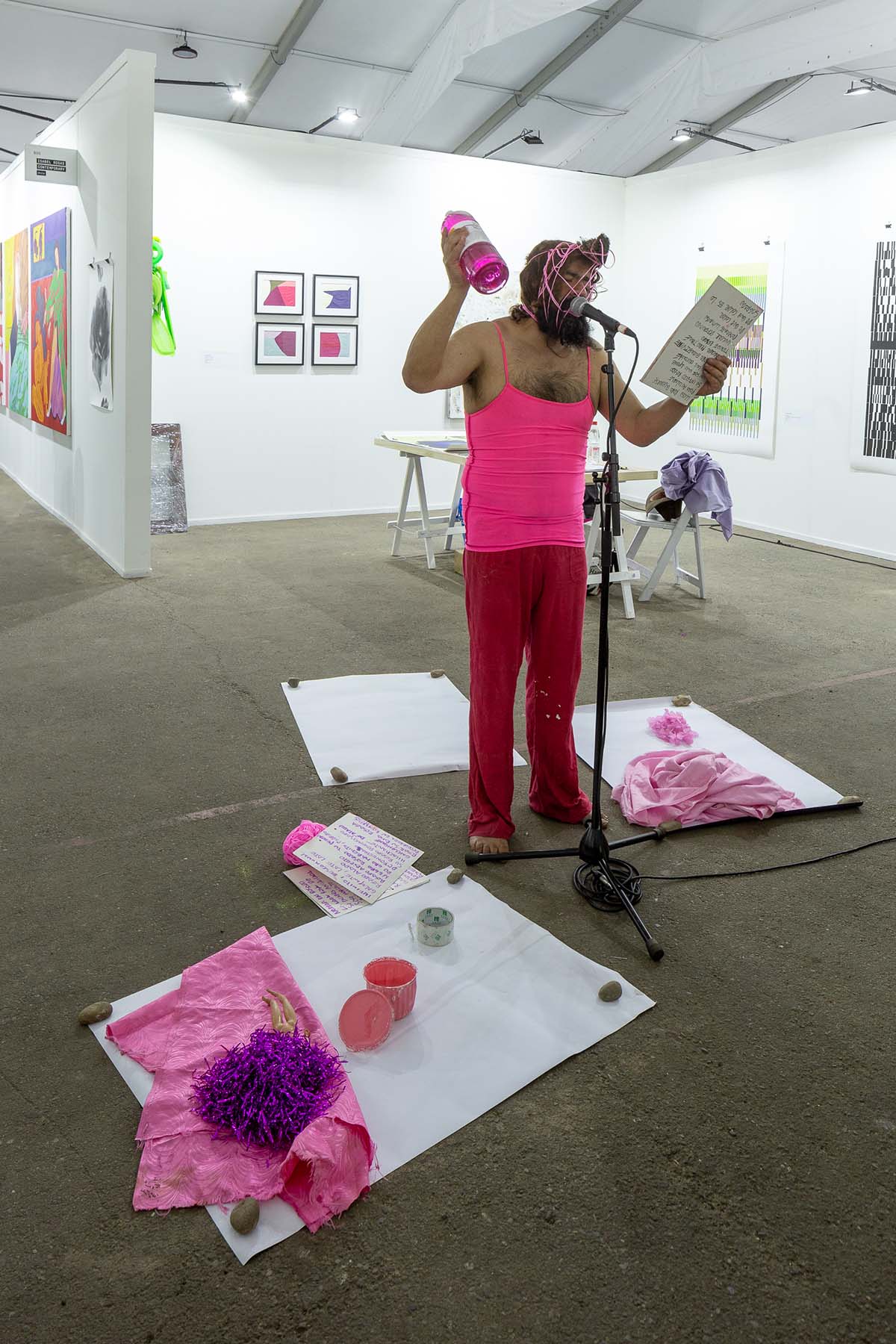
AO: Do you consider that Ch.ACO has become a springboard, window or door for young artists? How has this transition been?
EF: I think the most important thing is the number of managers. This year has shown that they have increased a lot, precisely because of the Ch.ACO effect. We understand how public funds work and we try to collaborate. There is a debt there, there is a lot of political foundation that Ch.ACO has and that is very important for it to last, so that it does not seem like an anecdote between three galleries. Ch.ACO is an institution. The experience of an artist in a gallery acquires a certain visibility, and his visibility here is multiplied by 100, 200 or 500. Because of the concentration effect, surprising things always happen. In that sense, I think that’s the great surprise that an artist who participates in the fair for the first time can have, that’s why it lasts five days. Each day has its particularity and a system; that is to say (to ask oneself), how much is my work worth? Why am I selling it like this? (Questions) that go through a certain rigor to prove oneself professional (…) We try to enhance the best and, nowadays, what we want is to enhance the complexity, the multitude. I believe that the information platform is also a work of the fair today: a proposal for the broad public to continue researching. And for an artist, to understand the codes so that he can manage alone or with galleries, or with an international gallery he met right there at the fair.
Tomorrow’s heritage
“Yes, in the first edition, we invited collectors and we also wanted to talk more about the local scene”—continues Elodie—” the great challenge here was to gather information and simply open up the collections, the museums had a sense of what is known and what they know how to do, but that the general public did not necessarily know. I am not saying that this is only the effect of Ch.ACO; there are many factors, such as the creation of a Ministry (of Cultures and Heritage), that museums today have more visitors (having free admission and diffusion). But young people today are going to understand what a heritage is. We always say that contemporary art is tomorrow’s heritage. So, each year has had its focus. A very human focus that depends entirely on the team that Ch.ACO invites. From the curators… even from their aversion to the market, which also has a place. Finally, they are visions that—thanks to our communication platform—are gaining visibility. I don’t think this is a story of affection, but it is a professional platform where if I want to say something, I go and ask for a space to talk about it and it will be available. And this is recorded, disseminated and posted on social networks. In other words, information is not lost, information is accumulated. And that also has to be interesting. I am talking about the ability to make history. Chile is very attractive for artists… it is incredible the number of international artists that come to develop projects in the country and that remain unknown; Ch.ACO seeks to disseminate them. Clearly the young people of the first editions are nowadays people who make certain decisions in institutions and at the curatorial level. We were also lucky to have certain intuitions and to invite very good curators who spread the quality of local art very well. The fair also has that scale: it’s not such a huge fair where people don’t bump into each other… Ch.ACO doesn’t complicate itself with other initiatives, on the contrary, it wants—hopefully—more and more projects to be born. The main point here is that, from a private initiative, many public questions have been raised. That allows things to last.
AO: Do you receive or feel some kind of social or cultural demand… How do they perceive them? How are they channeled?
EF: I believe that each institution has its mission and, at some point, Ch.ACO was charged with all the them… What we want is to generate an audience and to create opportunities. Ch.ACO is installed in the road of international fairs and, therefore, we want to show the activation, the new thoughts, to show the artists, to conquer collectors, becoming ambassadors of these artists, that other collectors become enthusiastic. For example, we hosted the talk of an international group that is talking about the Code of Ethics for Collectors. So, I think it’s interesting to promote that and invite some collectors to be local representatives of these international agreements. We want people to understand what philanthropy is, what patronage is, or why a museum works. That is to say, to make transparent the rules of the game that exist, that are not only a nebulous and eventually an elitist thing, but that—as in any passion, in any interest—there are codes that are not minor. It is not trivial for a fine arts museum to be a hundred years old. In the end, we are relieving history. We are not a festival. We are not a biennial. We can convey that culture is broader than the visual arts, and artists understand that very well.
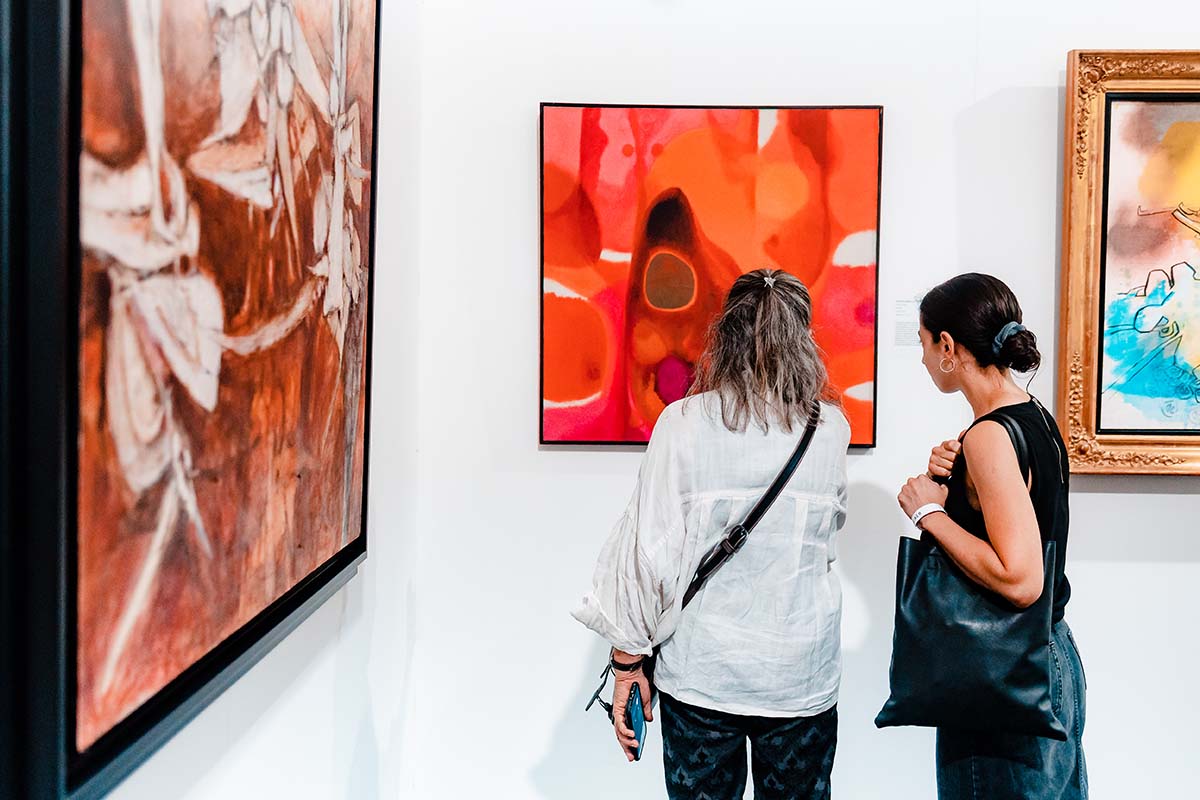
Comments
There are no coments available.